Keyword cannibalisation issues are very time consuming and cumbersome to solve. The best way of solving them is by avoiding them in the first place!
We recommend the following two strategies for avoiding future keyword cannibalisation issues on your site:
Keyword Mapping
Keyword mapping is the technique of clearly assigning target keywords to different pages on your site. This prevents you from using the same target keyword on any new pages you create, and lowers the chances of potential keyword cannibalisation issues.
Before creating any new page on your site, we suggest doing a quick “site:” search in Google along with your target keyword. This will show you current pages on your site that already target a particular keyword or topic.
For example, if you plan on writing a post on growing potatoes, you can do the following search in Google:
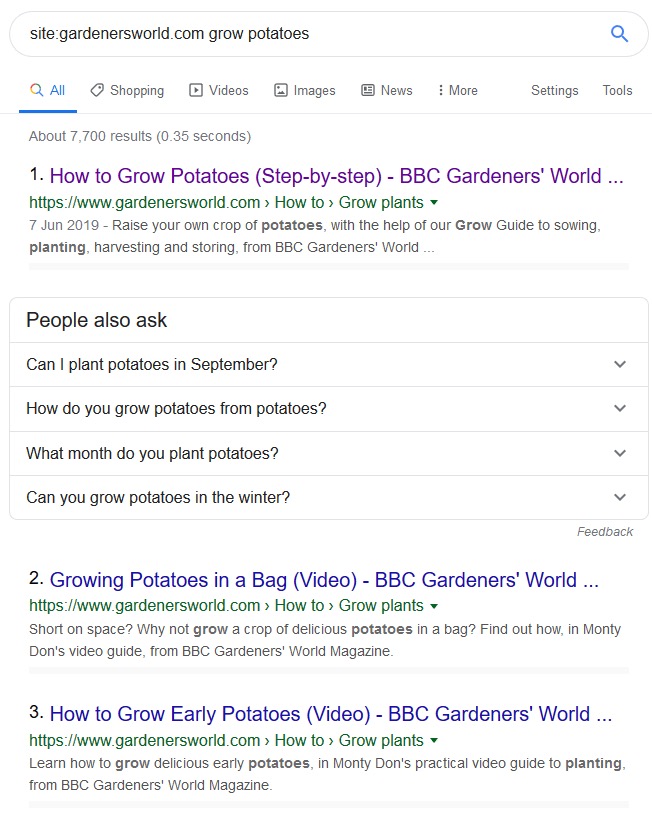
This will show you all the pages on your site that currently target this keyword. If there are loads of pages on your site already targeting it, then it should be roundly avoided. Instead, you might just want to optimise one of the current pages.
Alternatively, if there is only one or no pages on your site targeting this particular keyword, you are free to push ahead with creating engaging content to target it.
Keyword Intent
We’ve talked about keyword intent in many of our previous posts and will continue to stress the importance of keyword intent in SEO. When it comes to keyword cannibalisation, keyword intent is the biggest giveaway for potential cannibalisation issues on your site.
Take the following two search queries as an example (‘Sewing buttons’ vs. ‘Sewing a button’):
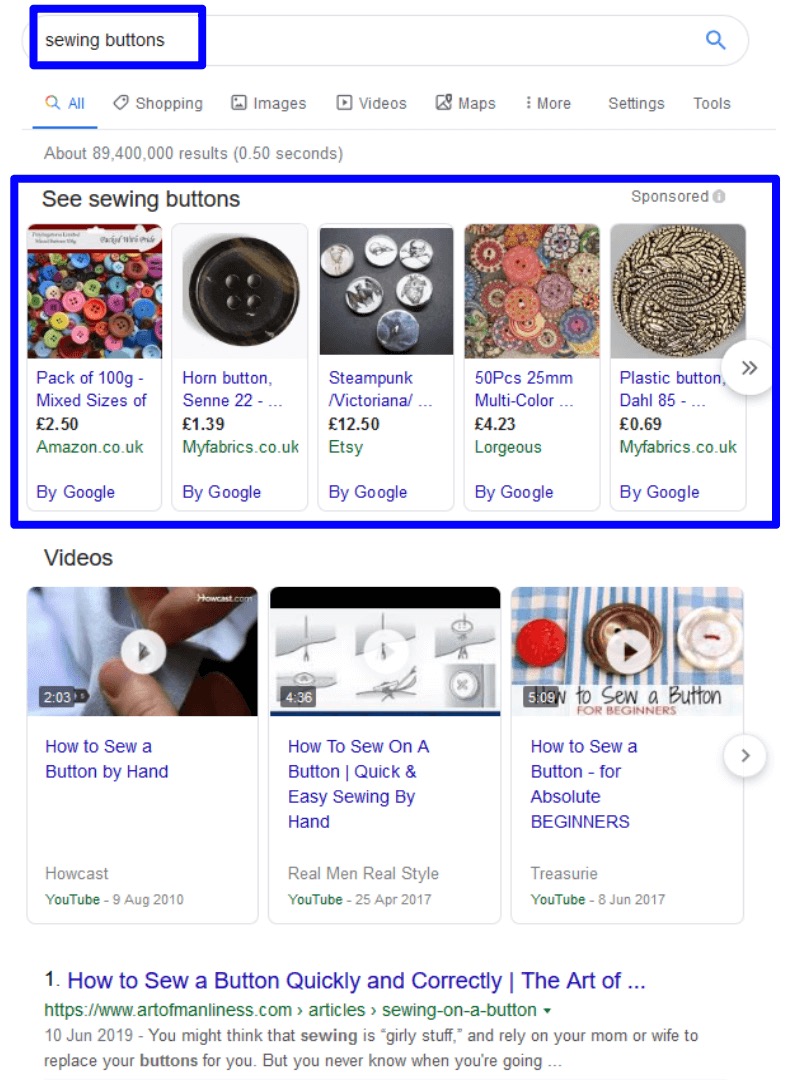
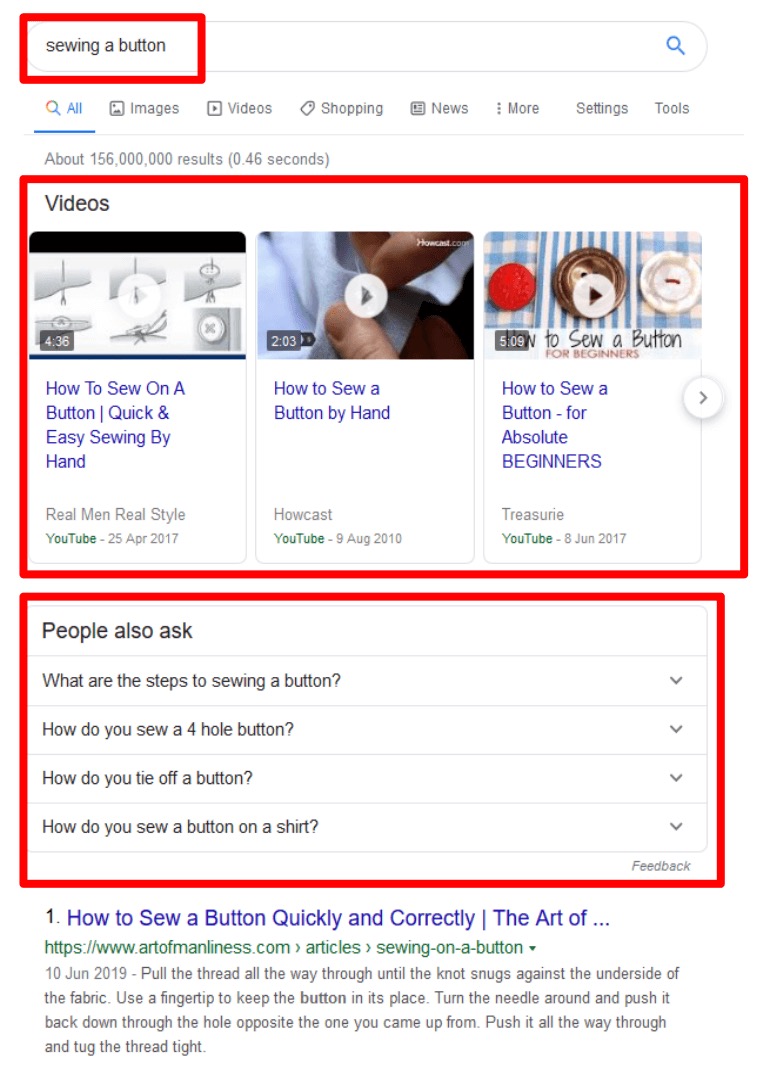
While both queries seem almost the same, the intent behind the queries is very different. The user on the right is in the ‘information gathering’ phase of their journey, while the user on the right is ready to make a purchase.
Because of this keyword intent, Google has decided to show the user on the right mostly informative content, such as the ‘how-to’ videos are at the top and there is also an ‘Ask’ box available. Conversely, the user on right is shown transactional content, such as the sponsored ads at the top, to make buying easier for them.
When identifying keyword cannibalisation issues on your site, intent is very important. Queries with the exact same intent can be a serious issue. On the other hand, similar queries with different intent might only cause a minor cannibalisation issue.
We suggest doing a quick Google search before actually creating a new page on your site. This quick Google search will show you the type of content currently ranking in the search results and the intent behind it. This can then help you to create the right sort of content for your target keywords.
For example, if you’re writing informational content, make sure your target keywords have informational intent:
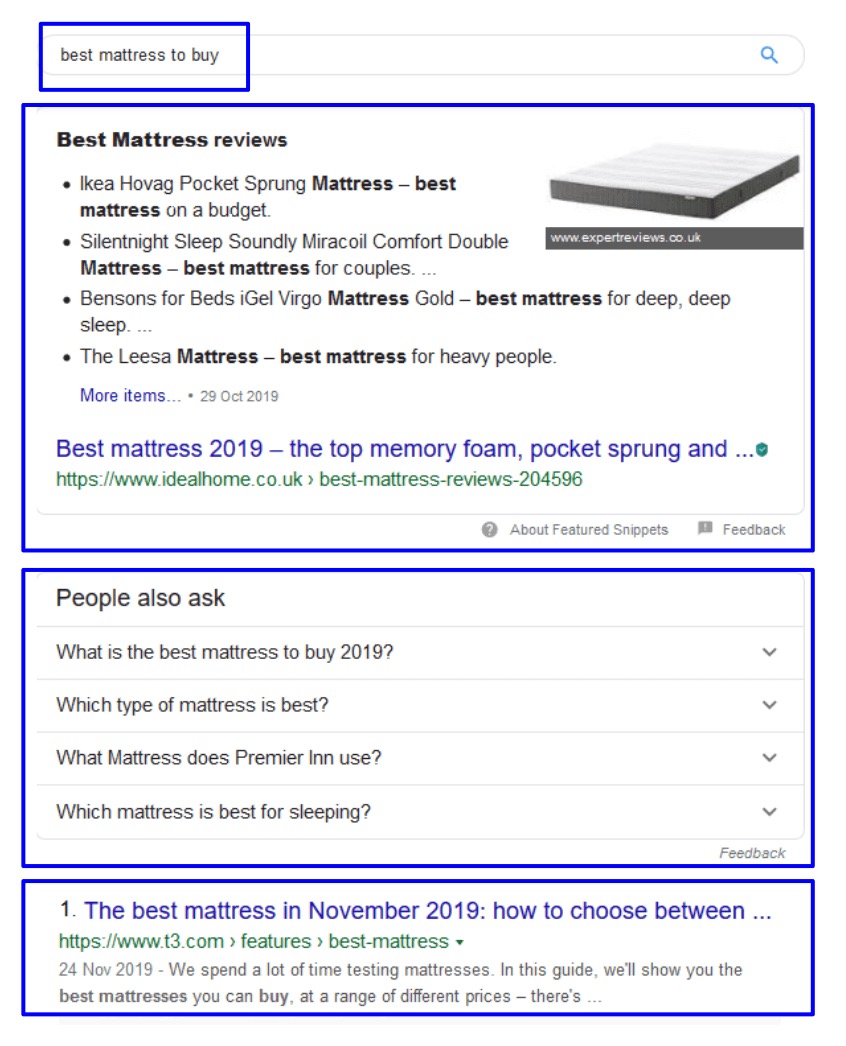
And if creating a product page to sell something, ensure your target keywords have a transactional intent behind them:
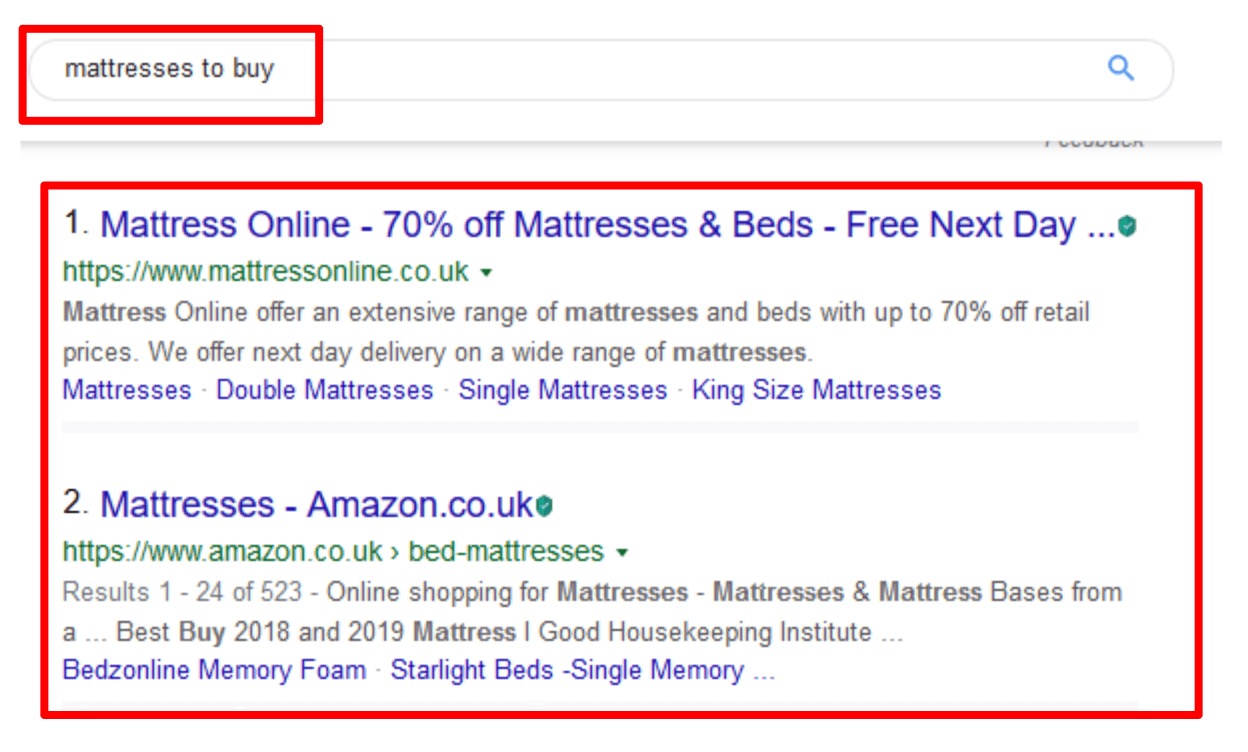
Keyword cannibalisation issues are not to be underestimated. We have seen many sites struggle to rank in top positions simply because they had too high an instance of keyword cannibalisation at play.
If you need expert advice on identifying and dealing with keyword cannibalisation, please contact our team today.